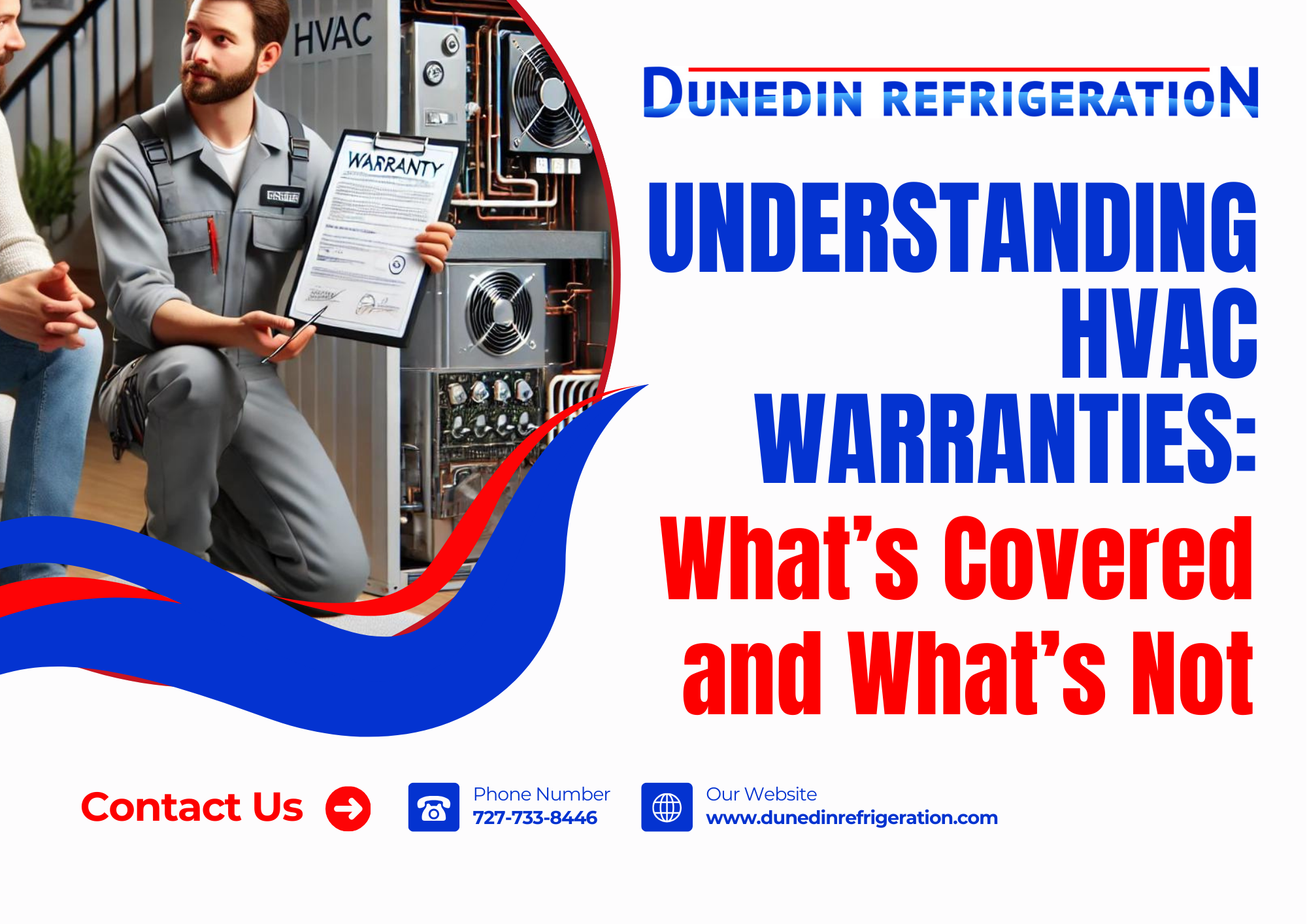When investing in a heating, ventilation, and air conditioning (HVAC) system, one of the critical aspects to consider is the warranty. Understanding HVAC warranties is crucial because it can save you significant amounts of money and stress in the long run. This blog will explore what HVAC warranties typically cover, what they don’t, and how you can make the most of your warranty to ensure your HVAC system remains in optimal condition.
The Importance of HVAC Warranties
HVAC systems are significant investments for homeowners and businesses. A warranty provides peace of mind, ensuring that if something goes wrong, you won’t be out-of-pocket for repairs or replacements. However, the extent of coverage can vary widely depending on the manufacturer and the specific warranty package.
Types of HVAC Warranties
There are several types of warranties associated with HVAC systems. Understanding the differences between them can help you make informed decisions when purchasing or maintaining your HVAC system.
Manufacturer’s Warranty
A manufacturer’s warranty covers defects in materials and workmanship under normal use during the warranty period. This type of warranty is provided by the manufacturer of the HVAC unit and typically lasts between 5 to 10 years. It often includes:
- Parts Warranty: Covers the cost of replacement parts if they fail due to manufacturing defects.
- Compressor Warranty: Specifically covers the compressor, which is a critical and often expensive component of the HVAC system.
- Heat Exchanger Warranty: Covers the heat exchanger, another crucial part, particularly in furnaces.
Extended Warranty
Extended warranties are often offered by either the manufacturer or the dealer and can extend the coverage period beyond the original manufacturer’s warranty. These warranties may also cover labor costs, which the manufacturer’s warranty typically does not.
Labor Warranty
Some HVAC dealers provide a labor warranty that covers the cost of labor for repairs. This is especially valuable because labor costs can be substantial.
Parts and Labor Warranty
A parts and labor warranty covers both the cost of parts and the labor required to replace or repair them. This comprehensive warranty provides extensive coverage and can save you significant amounts of money in the long run.
What’s Covered Under HVAC Warranties?
While the specific coverage can vary, most HVAC warranties typically cover:
Parts and Components
- Compressors: As one of the most critical components of an HVAC system, compressors are usually covered under warranty.
- Heat Exchangers: These are typically covered, especially in furnaces.
- Condensers and Evaporators: Key components in the cooling process are often covered.
- Motors and Fans: Essential for the operation of both heating and cooling functions.
- Thermostats: Some warranties include coverage for the thermostat, although this can vary.
Defects in Materials and Workmanship
Most manufacturer warranties cover defects in materials and workmanship. If a component fails due to a manufacturing defect, the warranty will typically cover the cost of the replacement part.
What’s Not Covered Under HVAC Warranties?
Understanding what’s not covered under HVAC warranties is equally important. Exclusions can lead to unexpected expenses if you’re not aware of them. Common exclusions include:
Labor Costs
Manufacturer warranties typically do not cover labor costs. This means you’ll need to pay out-of-pocket for the technician’s time to diagnose and repair the issue.
Regular Maintenance
Routine maintenance tasks, such as cleaning and inspections, are not covered under most warranties. However, regular maintenance is essential to keep your warranty valid.
Consumable Items
Items like filters, refrigerant, and batteries are generally not covered under warranty. These are considered maintenance items that need regular replacement.
Improper Installation
If your HVAC system was not installed according to the manufacturer’s specifications, the warranty might be voided. It’s crucial to ensure that a certified professional installs your system.
Accidental Damage or Misuse
Warranties do not cover damage caused by accidents, misuse, or neglect. This includes physical damage to the system or using the system in ways it wasn’t intended to be used.
Acts of Nature
Damage caused by natural disasters such as floods, fires, or earthquakes is typically not covered. Homeowners insurance may cover these events, but it’s separate from the HVAC warranty.
Tips for Maximizing Your HVAC Warranty
To make the most of your HVAC warranty, follow these tips:
Register Your Warranty
Many manufacturers require you to register your warranty within a specific period after installation. Failing to register can result in reduced coverage.
Keep Up with Regular Maintenance
Regular maintenance is crucial for keeping your HVAC system in good working condition and maintaining your warranty. Schedule annual inspections and tune-ups with a certified technician.
Use Authorized Service Providers
Ensure that any repairs or maintenance are performed by authorized service providers. Unauthorized repairs can void your warranty.
Keep Records
Maintain detailed records of all maintenance and repairs. This documentation can be crucial if you need to file a warranty claim.
Understand Your Warranty Terms
Read and understand the terms and conditions of your warranty. Knowing what is covered and what is not can prevent surprises and help you make informed decisions.
Conclusion
Understanding HVAC warranties is essential for protecting your investment and ensuring that your heating and cooling systems remain in top condition. By knowing what’s covered, what’s not, and how to maintain your warranty, you can avoid unexpected expenses and enjoy the comfort of a well-functioning HVAC system. Remember to register your warranty, keep up with regular maintenance, use authorized service providers, and keep detailed records. These steps will help you maximize the benefits of your HVAC warranty and keep your system running smoothly for years to come.
For more information on HVAC warranties and maintenance, contact Dunedin Refrigeration, your trusted HVAC experts. We are here to help you with all your heating and cooling needs, ensuring you get the most out of your HVAC system.

